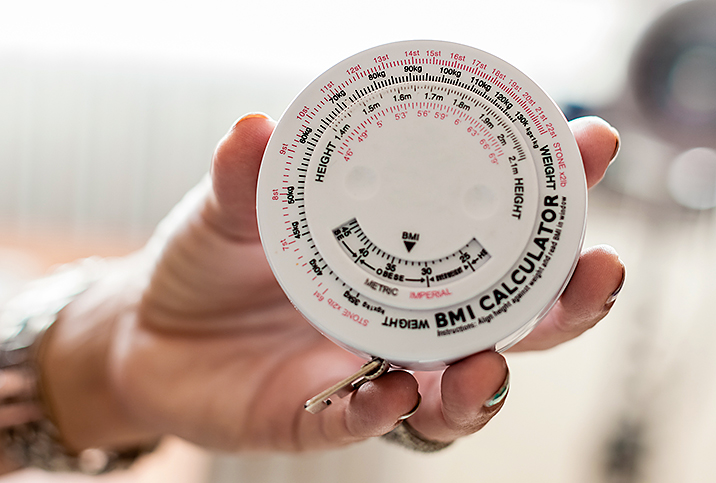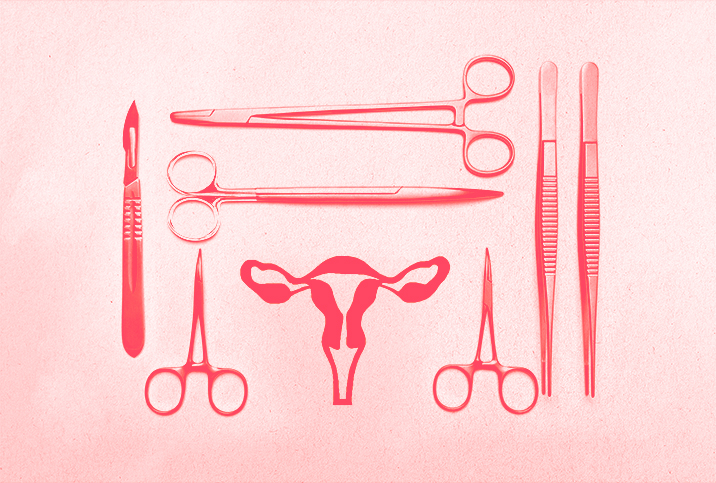How Your Body Composition Changes With Menopause and What You Can Do

Menopause is an unavoidable and natural process that signals an end to fertility, bringing along well-known physical changes and uncomfortable symptoms. Interestingly, hormonal decline and other physiological shifts that occur while aging may also be protective, offering specific social and physical benefits.
Although the societal expectations of attractiveness for women begin early in life, they certainly don't let up as you age. Women entering menopause often find their waist circumference increases, and muscle mass and bone mass may decrease.
Appearance aside, there are health concerns that arise due to these body composition changes, too. While working toward body neutrality or acceptance is ideal, so is living an independent, vibrant life with reduced risks of impairment and disease, and that often starts with prioritizing our health.
Body composition changes can affect health
Many women notice their bodies shifting during and after menopause, especially when it comes to fat distribution and storage. This is partly due to muscle loss and insulin resistance. As hormones naturally decrease over time, women become more prone to insulin resistance, which increases the risk for an increase in visceral fat.
"Visceral fat accumulates in our abdomen and around our organs and can be particularly harmful as it increases inflammation in the body, which increases our risk of diabetes and heart disease," said Carmen Stansberry, N.P., a women's health nurse practitioner in Maple Grove, Minnesota, who runs Wits and Wellness.
Muscle loss, also called sarcopenia, occurs with aging in everyone, but women can be particularly affected due to decreases in anabolic (muscle-building) hormones. Muscle mass is associated with a higher resting metabolism because muscle tissue burns calories even at rest. When your muscle mass declines, so does your metabolism. This can mean weight gain, but it also puts you at a higher risk of injuries due to a lack of strength and stability.
"Sarcopenia factors into changes in metabolism and exacerbates weight gain with a change in insulin sensitivity," explained Cynthia Thurlow, N.P., an author and nurse practitioner in Richmond, Virginia.
Increases in visceral fat are exacerbated by changes in inflammation, oxidative stress and insulin resistance, and can lead to higher levels of estrogen, Thurlow said.
Focus on quality nutrition
There are actions women can take to combat this body composition change.
"The most important thing to focus on is nutrition quality; decrease intake of refined sugars and carbohydrates and increase intake of lean protein, plant fiber, and anti-inflammatory oils and fats like olive oil, avocados and nuts, aiming for a protein intake of at least 20 grams per meal," Stansberry suggested.
Intermittent fasting, resistance training and moving after meals have also been shown in studies to improve insulin resistance, lower blood sugar and decrease visceral fat production in midlife, according to Stansberry and Thurlow.
Thurlow, who's written a book and given two TEDx Talks on the subject, said eating less often may help with insulin resistance. She also recommended focusing on a nutrient-dense whole foods diet that includes more protein, the right types of healthy fats and appropriate carbohydrates.
Be mindful of estrogen-mimicking chemicals in food, environment and personal care products, and examine your relationship with alcohol, Thurlow added.
Strength training works wonders
As mentioned, muscle loss plays a prominent role in menopausal body composition and health changes.
"Maintaining muscle through heavy weight training, hydration and protein dosing can be a great way to disrupt some of these changes," said Antonietta Vicario, vice president of talent and training, lead certified trainer and women's fitness and wellness expert at P.volve in New York City.
Vicario suggested prioritizing heavy weight training at least two to three times per week.
"The more muscle on the body, the higher your resting metabolic rate, so you want to keep that ratio optimized as muscle burns fat," she explained.
Try strength training sessions that specifically focus on lifting the heaviest weight load you can manage while maintaining proper alignment to break down muscle fibers and stimulate muscle growth.
"At this phase in life, fewer reps at heavier loads is the name of the game," Vicario said.
Strength training is also incredibly valuable for defending against bone loss, an often debilitating result of declining estrogen which leads to osteopenia and osteoporosis. These bone conditions can lead to painful fractures and breaks and can reduce the likelihood of living independently as you age.
Stress reduction is a vital component
Exercise, including strength training, can also reduce stress, which is a key factor in managing body composition changes during menopause. Stress causes the release of cortisol, and chronic high levels can be damaging to health.
"Cortisol, when high, creates a signal in the body to hold on to fat tissue. Sometimes we are working against ourselves if our workouts are too hard and spike our cortisol levels," Vicario explained.
She suggested shorter intervals of cardio exercise at 20 to 30 seconds of all-out movement (think 9 out of 10 intensity) balanced with recovery time can be a great way to strengthen the heart, maintain bone density and even help improve brain function without spiking cortisol.
Other stress-reducing lifestyle practices include getting high-quality sleep, aiming for seven to eight hours each night, and actively engaging in the parasympathetic nervous system with habits such as meditation, grounding work, breathing exercises, yoga, tai chi and walking in nature.
Consider hormone replacement therapy
Although nutrition, exercise and stress-reduction habits are all irreplaceable aspects of a healthy lifestyle that provide unmatched benefits, hormone replacement therapy (HRT) is also an option for women during their menopausal transition.
"Hormone replacement therapy, also known as menopause hormone therapy [MHT], has been shown to improve body composition and decrease visceral fat production by directly treating the loss of estrogen that makes women more prone to metabolic dysfunction in midlife," Stansberry said.
Research indicates that HRT can reduce the amount of risky abdominal fat storage and shift body composition toward a healthier state. This process can reduce your risk of insulin resistance and high cholesterol levels.
However, it's important to note that menopausal hormone therapy has very specific uses, and altering body composition is not one of them. If a patient does not have symptoms of menopause, estrogen therapy should not be used simply to stop body changes.
If you're interested in HRT to treat the symptoms of menopause, discuss your options with your doctor.


















